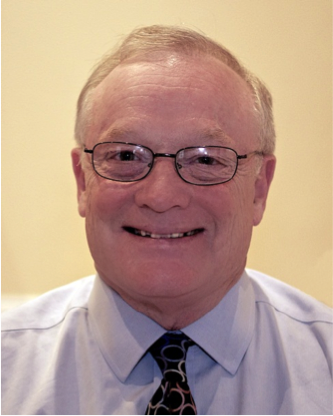Update from IRIS President Bob Detrick – Spring 2016
Dear Colleagues,
 This is always a busy time of the year, but for IRIS this Spring has been particularly busy as we mobilize for an ambitious summer field season, prepare our NSF SAGE Year 4 budget, begin work on our proposal for NSF’s recompetition of the management of the NSF SAGE and NSF GAGE facilities, and prepare for the IRIS Community Workshop in June and a major Subduction Zone Observatory Workshop this September.
This is always a busy time of the year, but for IRIS this Spring has been particularly busy as we mobilize for an ambitious summer field season, prepare our NSF SAGE Year 4 budget, begin work on our proposal for NSF’s recompetition of the management of the NSF SAGE and NSF GAGE facilities, and prepare for the IRIS Community Workshop in June and a major Subduction Zone Observatory Workshop this September.
In late February, NSF released a solicitation for the management and operation of what they have called the “National Geophysical Observatory for Geoscience” or NGEO for short. According to the solicitation, NGEO will comprise “a distributed, multi-user, national facility” for the maintenance and operation of modern geodetic, seismic and related geophysical instrumentation to support research and education in the Earth sciences. NGEO effectively combines the facilities that have operated under NSF SAGE and NSF GAGE into a single national facility, although it allows for multiple awardees to manage different parts of the facility. The scope of work outlined in the solicitation is divided into two broad categories – foundational facilities and frontier capabilities. Foundational facilities include both current and emerging capabilities that are critical to support science over the next decade (global and regional continuously operating geodetic, seismic, and related geophysical networks; portable geodetic, seismic and related geophysical instrumentation; data management systems; and education, workforce development, and public outreach programs). Frontier capabilities will support experiments targeting future scientific goals such as near-surface and critical zone geophysics, cross-coastal Earth systems science and atmospheric and cryospheric studies. The NGEO budget is approximately equal to the sum of the present NSF GAGE and NSF SAGE budgets and is projected to be flat at this level for the next 10 years. The proposal deadline is December 30, 2016.
Since the NGEO solicitation was released, IRIS has been working on several fronts to develop its proposal. Input on priorities for both foundational and frontier facility capabilities was sought from the IRIS community through IRIS’ standing and advisory committees. An internal team consisting of representatives from the IRIS Board of Directors, IRIS senior management and major subawardees began meeting weekly to develop an overall proposal strategy using the community input it had received. IRIS and UNAVCO have also been having high-level discussions to identify areas where we might work together within the NGEO framework. In early May, an ad-hoc committee from the broader community reviewed IRIS’ proposal plans and provided feedback to the Board of Directors. With the Board’s approval of these plans, IRIS is now assembling writing teams that will work over the summer to prepare a draft proposal. There will be a second external review of that draft in the fall before the proposal is finalized and submitted to NSF in December. We believe IRIS is in a good position to submit a very competitive proposal to the NGEO solicitation.
While responding the NGEO solicitation is drawing much of our attention, it is certainly not the only thing going on. On June 1st we will submit our NSF SAGE Year 4 budget for the year beginning October 1, 2016. This budget is once again flat from the previous year, the fourth consecutive year this has been the case. Rising costs in the face of these flat budgets continue to squeeze existing programs making it increasingly difficult to maintain state-of-the-art facilities and current staffing levels, as well as provide the level of service the community has come to expect. Unfortunately, we don’t see this situation changing anytime soon.
In June, IRIS will conduct a “Wavefields Demonstration Community Experiment” in northern Oklahoma designed to study the high levels of induced seismicity in this area. The experiment will make use of cutting-edge, three-component (3-C) 5 kHz nodal-type sensors. IRIS will piggyback on an existing NSF-funded single-channel nodal deployment led by Katie Keranen (Cornell University) that includes 1000+ single channel nodes and broadband sensors. Additional instruments provided by IRIS and IRIS community members (3-C nodes, broadband seismic and infrasound sensors) will be deployed in the same area to augment that experiment. A large number of students, postdocs, and faculty will participate in the community experiment both to gain experience in the field using these cutting-edge nodal sensors and to help collect a full wavefield data set for use by the wider community.
The IRIS Community Workshop will be held in Vancouver, Washington June 8-10. The theme of this year’s workshop is “Emerging Fields and Technologies in Seismology”. The organizing committee, led by Miaki Ishii (Harvard University), has assembled a very exciting agenda with stimulating talks and topical special interest group meetings. Pre-meeting activities include an Active Source Workshop, a Data Services Short Course, and a field trip to Mount St. Helens. Over 200 people have registered for the meeting - hope you will be there!
Finally, a reminder that the application deadline for the Subduction Zone Observatory (SZO) Workshop (September 29 - October 1, 2016) is coming up fast: June 1. The purpose of this workshop, which will be held in Boise, Idaho, is to seek community input and start defining what suite of activities would be involved in a SZO that would allow the entire subduction zone system to be studied at multiple scales from an integrated, multidisciplinary perspective.
Hope to see you at either the IRIS Workshop in Vancouver in June or the SZO Workshop in September!
Regards,
Bob Detrick, IRIS President
Download the IRIS President Update ( 166 KB)


